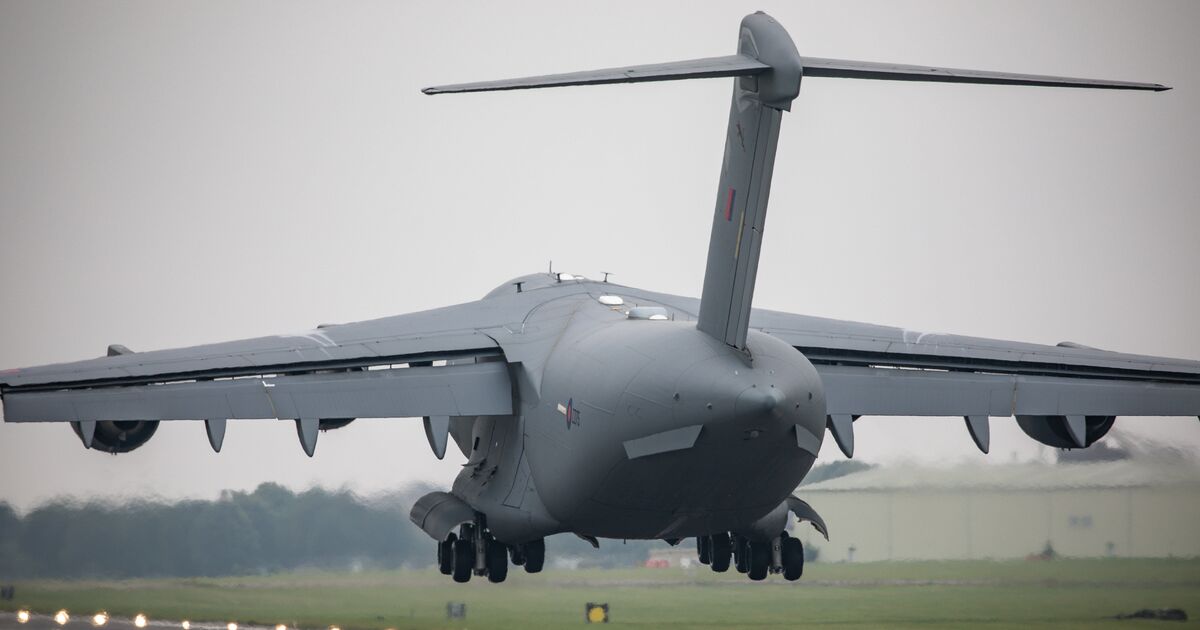The top-secret mission to bring thousands of Afghans to the UK was mounted from a backroom at the British Embassy in Pakistan. Every month for almost two years, an RAF C-17 transport aircraft landed in Islamabad to fly up to 100 Afghans to the UK after their credentials had been vetted and approved.
Operating at night, the C-17s – whose movements could be tracked on public flight-tracking apps – returned with Afghans and their families, who were then housed in former military housing after landing at RAF Brize Norton. Defence Secretary Ben Wallace commissioned the scheme, codenamed Operation Lazurite, to help Afghans who had served with British forces between 2006 and the end of operations in 2021.
Jointly overseen by the Ministry of Defence and the Foreign Office, the mission was coordinated by two senior Royal Marines and an Army officer, all serving with UK special forces.
They were brought in because many of those eligible had served in Task Force 444 – a covert Afghan unit that worked alongside the SAS and SBS in Helmand and beyond – and it was believed only those with similar experience could accurately assess their claims.
Over the 20-year UK campaign in Afghanistan, these so-called “triples” numbered in their thousands.
An office inside the British Embassy in Islamabad, operating under the guise of the Afghan Relocations and Assistance Policy (ARAP), served as the mission’s forward hub.
It was actually working for a new and secret Afghanistan Response Route (ARR), established to provide an alternative evacuation channel
The project was covered by a super-injunction banning all reporting on the repatriation effort.
Last night, a senior military source said they fully supported Wallace’s decision to bring Afghan special forces to the UK.
“We had a duty to them, and Wallace stood by his word,” the source said.
That secrecy was shattered in February 2022, when a top secret dataset listing Afghan personnel, their instructors and MI6 liaison officers was leaked.
Officially, the cause remains unclear. But it is believed to have originated at the special forces administrative HQ in Regent’s Park.
There, it is claimed, a rogue soldier released what he thought was a limited list of 150 names to a non-government official for verification.
Unusually, it was sent over open channels – bypassing the encrypted system reserved for those with Developed Vetting (DV) clearance.
Military sources say this could only have happened with broad ministerial consent “to get the job done”.
They, along with a senior Whitehall figure, say the dataset ended up with an Afghan contact in Islamabad – and it was from there that the leak occurred.
“It was sent to an Afghan in Pakistan,” said a senior Whitehall source. “But you have to realise, we were pulling out all the stops to get this done in what was a very challenging environment. “
The Ministry of Defence denies it was sent to Pakistan, however.
Former Afghan veteran Maj Andrew Fox, who later helped to evacuate more than 3,000 Afghans into Pakistan, said the scheme was chaotic.
“ARAP wasn’t a bespoke department. They were drafting in random civil servants on temporary three-month secondments, and the FCDO relied heavily on locally employed Pakistani case workers,” he said.
“It was an overwhelmed system with no continuity and a lot of local involvement. It was a recipe for disaster.”
On Wednesday, Sir Keir Starmer welcomed a Defence Select Committee inquiry into the affair.
The MOD denied that the dataset had been sent to Islamabad, with a spokesman saying: “We do not recognise this version of events.
“The data incident occurred under the previous government in 2022 when a spreadsheet with names of individual applicants for ARAP was emailed outside of official government systems.“

